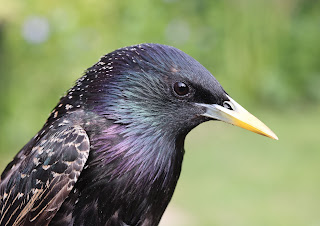We're delighted to confirm two recent hits on the #LDV Motus Tracking Station. Two Starlings originating from the Netherlands made the journey across the North Sea - with the first individual passing the #LDV station on the 28th October, before backtracking to the Netherlands on the 2nd November, where it is still present.
The second individual was also ringed in the Netherlands, by the Wageningen University & Research team - on the same date as the first bird (28th October). This individual remained in the Wageningen area until the 12th November, when it then made the journey across the North Sea, 'pinging' our #LDV Motus tower the following day on the 13th.
It's fantastic to be able to track these birds without re-catching them and to follow their journeys as they move around the world. Many thanks to those who helped fund this project, with special thanks to the private donors and York Bird Club for helping to sponsor our station on behalf of the Friends of the #LDV.

















